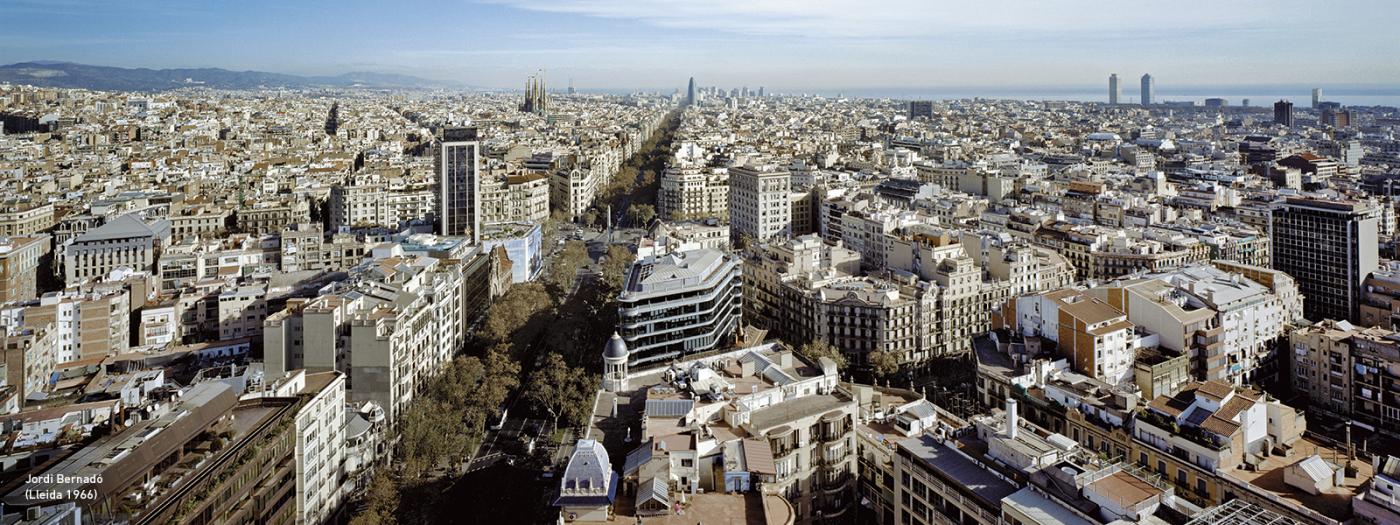The manner in which architects tend to plan the contemporary city and their particular approach to the programme of collective dwelling, usually follows standardised and determinate expectations of usage. When this happens, usage is detached from its grounded cultural and sensorial experience, rather being sanitised as a predefined commodity. The notion of a family unit, our socio-economic system, the perception of intimacy, the predominant religion in our context or the relationship with nonhumans are directly related to the domestic, labour and leisure phenomena and their spatial configurations. During this studio we will unveil these complex relationships, by being exposed to deeper spatial experiences and uncertainties.
Professors
Knowledge in systems of representation and drawing in different scales.
- Operative reinterpretation of archive, built and historical events to approach contemporary social and ecological thinking.
- Reading, understanding and communicating through drawing a complex civic metabolism that calls for a multiplicity of agents.
- Using design speculation as a tool to generate viable futures in the existing built environment, through architectural innovation, social consciousness and circular economy.
- Explorations of fresh unexpected artefacts of coexistence, embodying purposes characterised though cosmographic speculation.
Our purpose is to intervene in the built environment by distorting its habitual hierarchies to enhance a greater awareness of the common world. Direct observation from our environment and global data gathered from open sources will be intertwined with the study of transcultural situations, pulled from non-normative historical pasts, to discover open-ended intervals of exchange, intimacy, delight, play and care. History, in these terms, is embraced as a virtual experience: while the present seeks futurity, we constantly change our past. Each time we visit events of the past we find a hidden potential, that of playfully yet seriously interpreting it, with the aim of triggering unexpected, creative and joyful situations of habitation.
This workshop understands architecture simultaneously as a form of practice as well as a pedagogic and research methodology. This investigation, carried out through designing, shall unveil the material implications of producing spatial transformation on the built environment. This studio will work in a multiplicity of media and tasks: from researching to designing, from sharing to working individually. Such activities will be accompanied by talks, debates, round tables, on site and virtual visits to real or fictional places, and the common review of individual and collective work progress.
After grasping local and global information from contemporary sources crossed with archival painting, photography and writing, the course will start by drawing a cosmography of transcultural civic situations. In a second step, these cosmographies will provide the basis to speculate artefacts of coexistence, culturally and physically located at the core of an ordinary industrial district of LHospitalet, in the outskirts of Barcelona. Against hopeless spatial determinism, we will explore seemingly useless spatial supports, which in order to operate will require the addition of softer and tender mediator architectures, in pursuit of more inclusive, ecologic and balanced societies.
Students are requested to submit all the material on the e-study.
System MIAD for grading exercises:
0 - 4.9 Fail (this means that the tutor will have to ask the student to submit a supplementary work).
5.0 - 6.9 Pass.
7.0 - 8.9 Good.
9.0 - 10 Excellent/Distinction.
On this basis, students will be evaluated on several aspects such as: Attendance - 10 %
Assignments - 60 %
Final presentation - 40 %
BRAND, Stweard. How buildings learn. What happens after they are built. New York: Penguin books.
CHINCHILLA, Izaskun; La ciudad de los cuidados. CATARATA.
COLOMINA, Beatriz; Arquitectura de rayos X. PUENTE EDITORES.
GISPERT HERNÁNDEZ, Jordi de;. La ducha como dispositivo. Mecanismos de control de la higiene. DISEÑO EDITORIAL.
JAQUE, Andrés; Mies y la gata Niebla. PUENTE EDITORES.
MORTON, Timothy. Being Ecological. PENGUIN.
MOZAS, Javier; and CARUSO ST JOHN. The Office on the Grass: Evolution of the Workplace. A+T.
PRECIADO, Paul B;. Pornotopía. ANAGRAMA.
RATTI, Carlo and others. Open Source Architecture. Thames & Hudson Ltd, London.
DE CARLO, Giancarlo. Architectures Public. Re-edited in Architecture and Participation, edited by Peter Blundell-Jones, Donia Petrescu, and Jeremy Till. London, New York: Spon Press, 2005 (1992).
HABRAKEN, N. John. The Structure of the ordinary. Form and control in the built environment.
The MIT Press. 1998.
HEHL, Rainer and ENGEL, Ludwig. Berlin Transfer. Open Living Structures. Ruby Press. 2016.
SITE. Highrise of Homes. Rizzoli International Publications, Inc. 1982
SENNETT, Richard. Building and Dwelling. Ethics for the city. Penguin Random House, UK. 2018.
